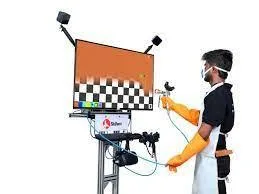In the construction industry, where precision and expertise are of paramount importance, addressing skill gaps stands as a critical concern. Modern construction is intricately complex, demanding a workforce equipped with a diverse range of skills, encompassing architectural design and hands-on building proficiency. Augmented Reality (AR) and Virtual Reality (VR) technologies hold immense potential in optimising skill development within the construction sector.
These cutting-edge technologies offer construction professionals immersive and highly realistic training experiences. Skillveri, incubated at IIT Madras and boasting over a decade of industry experience, is at the forefront of using AR and VR to redefine skill acquisition and bridge knowledge gaps in construction. Their mission is to make the industry safer, more efficient, and adaptable to evolving demands.
Skillveri specialises in skilling and vocational training using the metaverse. Their Multi-Skill Simulation Platforms on XR and VR are recognized globally as some of the most widely used simulators. By leveraging principles of Psychophysics and advanced extended Reality (XR) technology, which combines VR, AR, and MR, the company provides high-quality training for various hands-on skills such as welding, spray painting, and blasting, with more skills in development.
Constrofacilitator recently conducted an exclusive interview with Sabarinath C Nair, CEO & Co-founder of Skillveri. He is a computer scientist with a strong passion for simulation-integrated training methodologies. He brings extensive experience in developing intuitive and effective products and solutions for the developing world. Before co-founding Skillveri, he worked in marketing at Vortex ATMs. Additionally, he has been selected to be a part of the Prime Minister’s Champions of Change initiative, serving on the panel for Education and Skill Development.

During the interview, he shared insights regarding the market gap for skill training, the technology employed by the company, market challenges, and much more.
Here are the excerpts from the interview.
- What inspired you to start Skillveri, and what gaps in the market did you aim to address with your technology?
More than a decade ago, when the Delhi Metro and Delhi Airport’s T3 projects were underway, it was in the news that labourers from China & Peru were brought to work on them. This got us thinking on why in a country with a huge youth population, we are relying on outsourced labour for our critical infra projects. There was the realisation that there is a big demand for skilled labour in our industries, but our youth lack both the awareness and the required level of skills. Skillveri was born with the aim to bridge this ‘Skill Gap’ by leveraging technology to deliver precise, measurable and efficient skill training, making it both cost effective and learner centric.


- Skillveri mentions the use of immersive technology in skill training. Can you explain how XR, and other immersive technologies are used in your solutions?
Skillveri uses XR or eXtended Reality to deliver a real-world like immersive experience. It replicates the exact environment of working on a welding or painting job with all the visuals, sound and feel of actual equipment but without any of the smoke, fumes, or material consumption involved. The technology is used to continuously track the user’s hand movement, providing live corrective feedback, and accurate evaluation of the learners output across multiple critical parameters. Detailed analysis of the output quality reports to track learner’s progress, all go beyond what real world training alone can accomplish.
- What are the various sectors that Skillveri focusses on and how do you tailor your XR training programs to meet the specific needs of different industries?
Skillveri’s multi-skill platform currently has four industrial skills – Welding, Spray Painting, HVAC or AC repair, and Solar panel installation. The company’s offerings are largely used in industries and sectors where these skills are critical, and the cost of improper training is very high in the form of material wastage, rejections, reworks and safety incidents. Skillveri’s global clients span across sectors like automobiles, construction equipment, railways, power plants, and the paints & coatings industry. Skillveri’s learning modules, built with a lot of feedback from industry veterans, cover standardised equipment and scenarios relevant to these industries. We also work with our customers to recreate any specialised scenarios specific to them to help them train their workers better.


- What are the key challenges you’ve encountered while leveraging XR technology in skill development, and how have you addressed them?
One of the biggest challenges is not from technology itself, but addressing the mindset of many employers that incurring costs on training is not their responsibility. Training centres which provide skill development courses, on the other hand, have mostly theory-heavy and outdated learning methods which are not industry-relevant. Once we show industries the potential savings in time, training, and material costs, they are more open to implement our training solutions which deliver measurable impact. To enable skill development centres like ITIs to benefit from modern technology, we try to partner with CSR initiatives to equip them with our simulators. We have found this model successful in establishing training centres of excellence in some ITIs, which are now benefitting multiple batches of students.
- Are there any futuristic technological advancements or developments at the company that you find particularly compelling and substantial.
While working on solutions for decorative painting, we came across the need within the repainting sector, that contractors or architects faced challenges in estimating and helping the customers visualise how the houses would look like after the repainting. One of the products that we built uses spatial computing techniques that help a contractor to quickly map the existing rooms into a 3D format, estimate the total paintable area, time estimated and generate a quote from a mobile app instantaneously.


